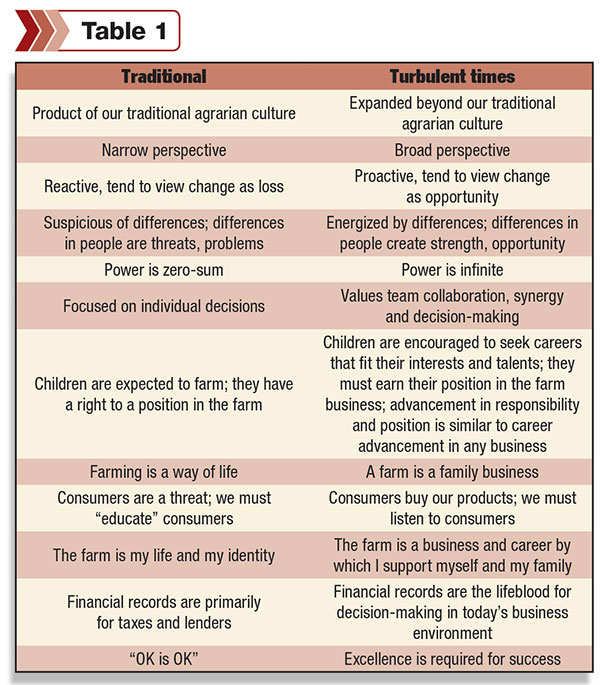To read this article in French, click here.
Last winter, I had the great honor to deliver the keynote address at the New York State Agricultural Society Forum. In this article, I share what I told that audience of agricultural leaders of New York state. My goal, in concert with the theme of the forum, was to identify challenges and opportunities facing agriculture with an emphasis on addressing young men and women interested in the agricultural sector.
My emphasis was on changes required to succeed and thrive in the exciting, turbulent, changing world of the 21st century. Table 1 , contrasting characteristics of our traditional agrarian culture with those required to thrive in today’s turbulent world, serves as a basis for our discussion.

The outline for the required changes follows the equation
P3 = Opportunity
with the three P’s being precision, people and preparation. Below, we discuss each P.
Precision – technology and operational excellence
The last item in Table 1 might well be the most important. A characteristic of our agrarian culture – not of everyone of course – that has always frustrated me as an achiever is the attitude that “OK is OK.” That attitude will not serve our industry well in our now super-competitive world and needs to be replaced by an acceptance that excellence is required for success.
The need for excellence will be further driven by the ever-increasing advances in technology. Precision agriculture will increasingly become the greatest operational challenge and opportunity for agricultural producers.
A myriad of additional technologies are or soon will be at the tipping point where they dramatically impact agriculture. These include but are not limited to virtual communication, robotics, nanotechnology, genetic engineering and artificial intelligence.
Think about the range of crop yields and animal productivity that we see from farm to farm. Now think about how much difference there is in productivity between Walmart and Target or John Deere and Case IH or two successful restaurants in a nearby town.
I think you will agree that none of the three have productivity ranges even approaching what we have in agriculture. In fact, one would not survive if they did. Farm productivity will become more like those three as operational excellence continues to be even more mandatory for success.
People – skills and continuous improvement
Our focus in both agricultural education and continuing professional development has been on technical skills – crops, animals and machinery. These skills must continue to increase; however, especially in continuing professional development, there must be a dramatic increase in learning leadership, hiring, supervisory and relationship skills.
The following three reasons contribute to the increasing importance of these people skills:
1. The excellence required for success discussed above cannot be achieved without increased people skills.
2. Generation X (birthdates 1965-1980) and especially the millennial generation (1981-2000) are characterized by not being willing to work in positions that do not have meaning to them.
3. It is difficult to impossible to provide meaningful positions without training in leadership, supervision and relationship building.
How then does a manager increase his or her proficiency in people skills?
- Determine where the leaders in your community – superintendent of schools, bank president, mayor, etc. – go to share leadership experiences and learning. Consider joining.
- Select some resources from the Internet to follow and review frequently.
- Participate in programs organized by business schools, especially those focusing on agribusiness and family business leadership and management.
- Read books on supervision and leadership. Books range from stories to complex textbooks.
Preparation – strategic leadership and collaboration
How, then, does one prepare their business for the changes discussed above? First, there must be a greater focus on the strategic leadership function. The owners and partners must focus on:
- Why: Vision – everyone needs to know why what we are doing is important. The motivation.
- What: Strategy – the direction we are taking to fulfill our vision. Our direction to success.
- How: Farm culture – the way we behave as we implement our strategy to fulfill our vision. Requires alignment of strategic leadership, workforce passion and operational excellence. Drives what we do every day.
These must be proactively discussed, agreed upon and implemented by the business partners. Historically, our focus has been on individual decision-making, typically as a sole proprietor. Today, as our farms become larger, there must be a great focus among partners on team decision-making, collaboration and the resulting synergy. Simplistically, synergy means one plus one is greater than two.
A final word
The 21st century will provide challenges and an abundance of opportunities. The opportunities can be best met by focusing on precision, people and preparation.






